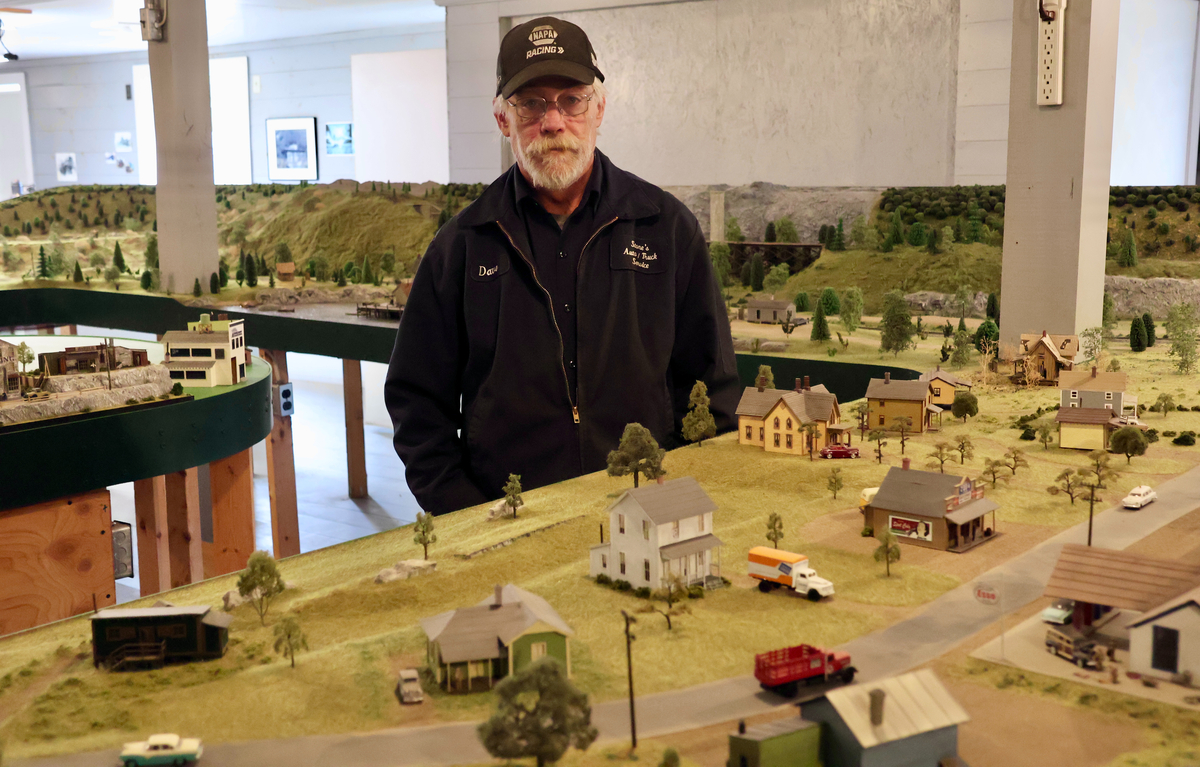Copyright Bangor Daily News

Almost no one knew about Frank Briggs’ passion project while he was still alive. For two decades, he had worked hard in near-obscurity building a vast model railroad on the second floor of a converted chicken barn in the Knox County town of Appleton. The retired construction company owner and general contractor created it scene by scene in exacting detail: an ice house, a lumber mill, a farm, a deer hunting scene, service stations, a switching yard, depots and neighborhoods of the 1950s and 1960s. When Briggs died in September at 81, he willed the model to Dave Stone, the auto mechanic who moved his business to the barn in 1999. One section is 30 feet by 9 feet, the second 23 by 22 feet. “He didn’t say what he wanted,” Stone said. “He asked me what I wanted.” What Stone wants is to keep the models right where they are. He wants to form a club to operate the trains, continue building and open the model railroad up to the public. He hopes sharing them will help Briggs’ work live on and spread the enjoyment of model railroad building. The two met about 35 years ago through Stone’s work on Briggs’ construction trucks. When Stone bought the building, Briggs helped with financing and lived onsite. Stone gave him a lifetime lease to the second floor. A few months ago, with arthritis coming on, Briggs handed Stone the keys and started teaching him to operate the tiny cars – 12 steam engines and 11 diesel – which are controlled by 82 computerized switches connected with bundles of wires under the tables the scenes are built on. Briggs was a quiet homebody with a sense of humor, Stone said, and “wicked disciplined.” He got up at three or four in the morning and was in bed by seven; he kept a spotless, tidy shop at the end of the second floor. He once surprised Stone by quietly building an auto shop along the railroad with his name on it to see when he’d notice it. Since his death, Stone has added a headstone in Briggs’ memory. “His skill and attention to detail could be seen in every piece he crafted,” Briggs’ obituary said of his work. “He was an artist.” Mysteries remain: Stone doesn’t know what motivated Briggs to start the railroad or work so hard on it, whether the scenes were modeled after any particular place or what he hoped would happen to it next. His immediate family members live out of state, so its fate is in Stone’s hands. Some have suggested he should make it into a museum. “But a museum, to me, is something you look at, something you don’t touch,” he said. If a local model railroad club is created, it could learn the operation of the setup, keep it operating and even expand it, Stone said. An open spot remains that could be an airport or a landing pad for a model blimp in Briggs’ attached workshop, he added. Assembling a model railroad takes a variety of skills. Stone, who enjoys the trains himself, likes the mechanical side. But it also involves detailed craft work assembling buildings, electrical knowledge to wire the trains, and plenty of imagination. Plus, he said, it’s just fun. “I’ve got to put it out there,” he said.



